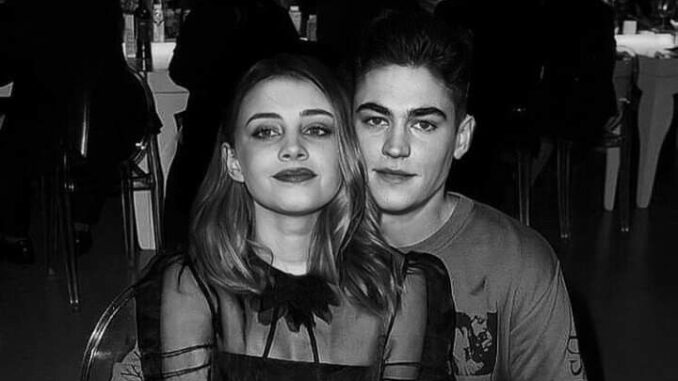
After Ever Happy begins in the immediate aftermath of a revelation that shakes Hardin to his core: Christian Vance is his biological father. The news devastates Hardin, who feels betrayed by everyone, including Tessa. Instead of turning to her for comfort, he spirals. His instinct is to run—not from the truth, but from himself.
He heads to London alone, shutting Tessa out entirely. This isn’t the first time Hardin has lashed out in response to pain, but this time, it hits differently. Tessa follows him to London, trying to support him, but what she finds is a man on the edge. The emotional distance between them grows, and their fragile relationship begins to fracture under the weight of secrets and miscommunication. Just as Hardin is dealing with family revelations, Tessa is hit with an emotional bomb of her own. When she returns to Washington, she finds her father dead in their apartment from an overdose. It’s a gut-wrenching moment that leaves her shattered and numb. The only person she wants comfort from is the very person who is no longer there: Hardin. But when Hardin finds out about her father’s death, he doesn’t rush to her side. Instead, he continues to self-destruct. Tessa begins to realize that loving Hardin may not be enough to save either of them—and it may be costing her more than she can afford to give.
The pain both characters go through brings a major shift in tone for the novel. While the previous books were packed with drama and heated arguments followed by passionate reconciliations, After Ever Happy slows things down to let the trauma breathe. Anna Todd doesn’t sugarcoat the reality of mental health struggles, addiction, and co-dependency. Tessa starts pulling away—not out of spite, but out of self-preservation. She begins to understand that she can’t be Hardin’s lifeline if she’s drowning too. This isn’t just a break in their relationship; it’s a fundamental change in how she sees love. She wants to save herself, and for the first time, she chooses herself over the idea of fixing Hardin.

Hardin, in turn, starts going to therapy and begins the long, painful journey of healing. But healing isn’t linear, and it’s not quick. He slips, he struggles, but we start to see glimpses of the man he could become—someone who takes responsibility for his actions and someone who could truly love without hurting. One of the most significant aspects of After Ever Happy is the time jump. After Tessa moves to New York to build a life of her own, the story fast-forwards through the years, showing us both Hardin and Tessa’s personal growth.
Hardin becomes a published author, writing a book based on their love story—yes, the book we’ve been reading. He finally begins to process his trauma and acknowledges the damage he’s done. Tessa, on the other hand, discovers she has fertility issues, but instead of crumbling under the weight of another heartbreak, she adapts and focuses on a life she can be proud of. Their paths remain separate for a while, but never truly disconnected. Every now and then, they run into each other—those accidental, soul-piercing moments that remind readers that some love stories don’t end cleanly.
Despite everything—the heartbreaks, the betrayals, the missed chances—After Ever Happy circles back to what brought fans to the story in the first place: Hardin and Tessa’s undeniable connection. They never stopped loving each other. They just had to learn how to love themselves first.
In the final pages, the story comes full circle. Years later, Hardin and Tessa are together again, but this time, it’s different. Their love is no longer destructive. It’s mature, grounded, and real. They marry and have children, not because they need to patch up brokenness, but because they’ve chosen each other—whole and healed. What sets After Ever Happy apart from earlier books in the series is its raw honesty. It’s not a fairy tale. It’s a portrait of what love can look like when it’s put through the fire and still manages to survive. The novel explores the complexities of trauma, the importance of self-worth, and the reality that sometimes, love means letting go—until both people are ready to truly be together.
For longtime fans, After Ever Happy is both satisfying and sobering. It’s a farewell to the chaotic, co-dependent duo we first met in After, and a welcome to the healed, more grounded individuals they become. Anna Todd doesn’t promise an easy love story—she promises a real one. Whether you saw Hardin and Tessa’s journey as toxic or transformative, After Ever Happy offers closure. It’s a reminder that sometimes the best kind of happy ending isn’t the one you imagined—but the one you fought for.
